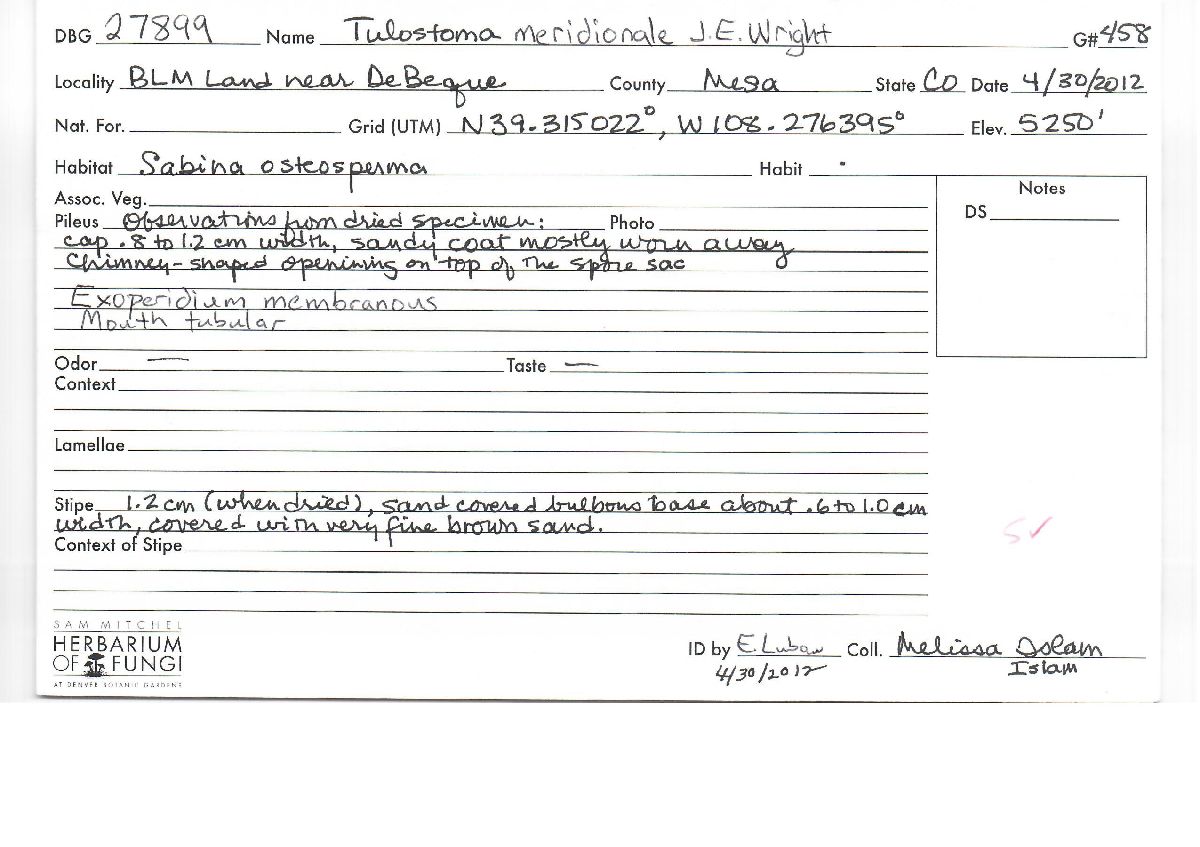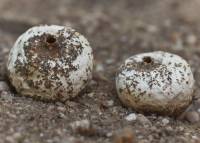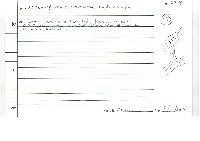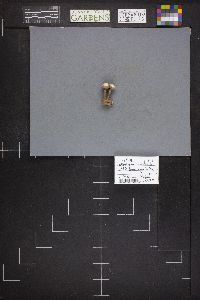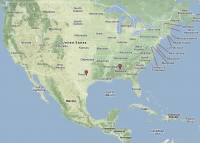
|
|
|
|
Family: Agaricaceae
|
Wright J.E. 1987. Bibliotheca Mycologia 113: 152. T. meridionale J.E.Wright (Fig. 97; P1,XLI:4) apud Wright, Herrera & Guzman, Ciencia (Mexico) 27 (4-5): 117. 1972. Etym.: the name refers to its Southern distribution in the United States. Spore-sac up to 13 mm diam, averaging less than 10 mm. Exoperidium formed by a thin, very persistent, not entirely caducous membranous layer that sloughs off in small patches, white within, dirty greyish brown on the outside. Endoperidium finally smooth, dirty pinkish white to slightly ochraceous. Mouth conspicuously tubular, rather projecting in most specimens; peristome generally surrounded by remains of the exoperidium; margin of the tube white. Socket inconspicuous, more or less separated from the stem, membrane denticulate or lacerate. Gleba dark ferrugineous. Stem up to 20 x 3 mm, slender, straight or slightly broadened towards the base, ferrugineous brown or lighter, obscurely striatulate-rugulose, peeling off easily and then exhibiting a much lighter surface (straw-coloured). Spores dark brown, globose to elliptic, apiculate, large (6.8)-8-8.5(11.5) µm, grossly verrucose to aculeate, with an appressed and irregular ornamentation under L.M.; under SEM the ornamentation appears as gross, uneven verrucae, differently orientated and seemingly formed by fused elements. Capillitium hyaline to slightly coloured, septate and branched; threads slender compared with the size of the spores, 2.5-9.3 µm diam, thick-walled and lumen visible to almost solid, slightly swollen at the moderately coloured septa; some threads disjointed at the septa and with blunt ends. Habitat: rich soil. Distribution: North America: S. United States and Mexico; South America: NW Argentina. Holotype: United States, Texas, Denton, leg. W. H. Long 2061, XII. 1907 "ad terram arenosam in locus siccus, fimosus" (Herb. Lloyd n° 53.153, BPI!). Illustration: Wright (op.cit.). |

